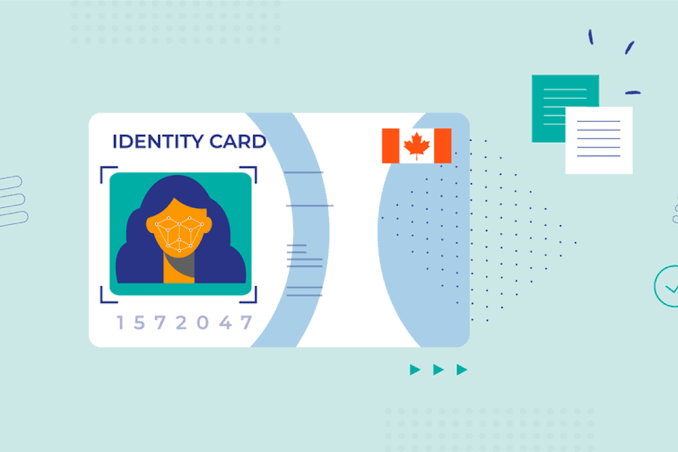In a world that is becoming more digital, secure and easy ways to verify identity are very important. As services like banking, healthcare, government benefits, and taxes move online, the risk of identity theft and data breaches also increases. To address this, Canada has created a new digital identity verification system that protects people’s information and makes it easier to access important services. This change is a big step towards modern government and digital citizenship. It is not just about technology but a new way of handling identity in the digital world.
Understanding Digital Identity
Before diving into Canada’s specific approach, it is important to understand the concept of digital identity. A digital identity is a set of electronically captured and stored attributes that uniquely identify an individual online. These attributes can include names, addresses, biometric data (such as facial recognition or fingerprints), government-issued ID numbers, and even behavioral patterns.
The goal of digital identity systems is to enable individuals to prove who they are, remotely and securely, without needing physical documents or in-person visits. Such systems are particularly valuable in a vast country like Canada, where access to services can be hindered by geography or physical distance.
Why Canada Is Modernizing Its Identity Verification Process
Several driving forces have led Canada to invest in a modern digital identity system. First and foremost is the demand for convenience. Canadians want quicker, simpler access to government and commercial services without repeated manual verification. Moreover, the rise in cybercrime, identity theft, and sophisticated phishing scams necessitates stronger protections.
Another motivator is interoperability. Various provinces, territories, and federal agencies often maintain separate systems, leading to redundancies and inefficiencies. A unified, standardized digital identity framework fosters cooperation, cuts costs, and reduces paperwork. It also ensures a consistent user experience across platforms, which is particularly important in maintaining public trust.
The Role of the Digital ID and Authentication Council of Canada (DIACC)
The Digital ID and Authentication Council of Canada (DIACC) has been instrumental in shaping the national strategy. Established to bring public and private sector stakeholders together, DIACC aims to build a robust, privacy-respecting, and inclusive digital identity ecosystem.
One of its key initiatives is the Pan-Canadian Trust Framework (PCTF). This framework outlines a set of standards, policies, and technical requirements that ensure digital identity solutions are secure, interoperable, and user-centric. With participation from financial institutions, tech companies, and government bodies, the PCTF is laying the foundation for a trusted digital identity infrastructure that benefits all Canadians.
How the New Digital Identity Process Works
Canada’s new digital identity verification process integrates advanced technologies to validate and protect users’ identities. Here’s how the process typically unfolds:
- Digital Registration
Users begin by registering their identity using a secure platform. This may involve uploading scanned documents such as a passport, driver’s license, or birth certificate. In many cases, registration is performed through an official mobile app or a government portal. - Biometric Authentication
To ensure the person registering is the legitimate holder of the documents, biometric verification is employed. This could include facial recognition, iris scanning, or fingerprint matching. The user may be asked to take a live selfie or record a short video to confirm liveness, preventing fraud via stolen photos or deepfakes. - Cross-Verification with Government Databases
Submitted data is cross-checked in real-time against official databases to verify its authenticity. The system ensures that the information matches records held by provincial or federal authorities, reducing the risk of forged or stolen identities. - Issuance of a Digital Credential
Once verified, the user is issued a secure digital credential. This can be stored on a smartphone, computer, or cloud-based wallet. The credential allows the individual to authenticate themselves seamlessly when accessing online services—from renewing a license to filing taxes or opening a bank account. - Privacy and Consent Management
The new system places strong emphasis on privacy and user control. Individuals can choose which pieces of their information to share with service providers. Consent is required for every transaction, and data is never shared without user approval.
Integration with Private Sector and Financial Institutions
The government is not working alone. Banks, telecom providers, and insurance companies are actively collaborating to integrate digital identity into their services. For example, platforms like Verified.Me, developed by SecureKey and supported by Canada’s largest financial institutions, allow users to verify their identity across platforms using bank credentials they already trust.
This partnership between public and private sectors is critical. By ensuring that both government and commercial services accept the same digital credentials, users can move fluidly across sectors without having to repeatedly verify themselves. It also provides businesses with a secure, compliant way to onboard customers.
Security and Anti-Fraud Measures
Security is at the core of Canada’s digital identity strategy. The new system uses encryption, blockchain technology, and real-time fraud detection algorithms to prevent unauthorized access. Multi-factor authentication adds an extra layer of protection, requiring users to confirm their identity via multiple methods.
To further enhance resilience, the government has put in place strict regulatory oversight. The Office of the Privacy Commissioner of Canada (OPC) ensures compliance with federal privacy laws, and regular audits are conducted to detect vulnerabilities.
Accessibility and Inclusion
A major priority of the digital identity program is to ensure that all Canadians—including those with disabilities, limited digital access, or non-traditional forms of ID—can participate. Services are designed to meet accessibility standards, and outreach programs are helping educate underserved populations on how to use the system.
The government is also working to support Indigenous communities, many of whom face barriers to accessing traditional identification. By involving community leaders in the design and implementation process, Canada is striving to create a system that reflects the country’s diversity and promotes equitable access.
The Road Ahead: What to Expect
While Canada’s digital identity system is still evolving, the long-term vision is clear. The country aims to have a fully interoperable, pan-Canadian digital ID solution that can be used across all levels of government and industry. In the near future, Canadians may be able to use a single, secure digital credential for everything from border entry to university enrollment to healthcare services.
Legislation is also catching up. Proposed laws will define how digital credentials are issued, who can access the data, and what penalties exist for misuse. As more provinces join the initiative and standards become universally adopted, digital identity will become a seamless part of daily life.
Conclusion
Canada’s new digital ID process is a modern way to prove your identity. It combines safety, easy access, and speed, giving Canadians a better way to verify who they are. As government services go digital, this system improves security and lets people manage their digital identity. Identity in Canada is moving beyond physical cards and papers—it’s now safe and handy on your phone.



